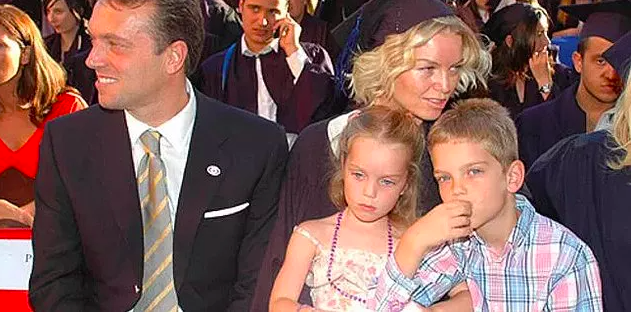Sri Lanka is experiencing its worst economic crisis in decades with a foreign currency shortfall and soaring inflation — food inflation alone neared 30 percent in March — following consecutive years of deficits and a disastrous drop in tourism, which withered during the coronavirus pandemic. The island nation’s 23 million residents have struggled to afford or find milk, cooking gas and even paper in their markets. Its largest cities have lacked electricity for up to 13 hours a day and gone dark at night to conserve power, a dismal turn for a South Asian economy that had seen 8 percent yearly growth a decade ago and had a steadily emerging middle class.
On Monday, Rajapaksa appealed for all political parties, including his opponents, to come together “within a democratic framework.” “Considering this is a national need, the time has come to work together for the sake of all the citizens and future generations,” his office said in a statement. Rajapaksa said he would reshuffle his cabinet and fire his brother and finance minister, Basil Rajapaksa, while he negotiated with other parties to form a new government.
But opposition leaders rejected his offer and said they would not join the government unless Rajapaksa went further. They demanded the ruling party, the Sri Lanka People’s Front, led by Prime Minister Mahinda Rajapaksa, the brother of Gotabaya, relinquish power.
“The public are calling for Gota to go home and for the Rajapaksas to go home. We stand with the public’s calls," opposition lawmaker Rajitha Senaratne said, referring to the president and his family, at a news conference Monday where he called for new elections. “We will only form a government with the blessings of the public.”
The economic meltdown and turmoil on Sri Lanka’s streets are a challenge to a family that has ruled Sri Lanka for much of the past two decades. Mahinda Rajapaksa previously served as president between 2005 and 2015. Although troubled by corruption allegations, he was beloved by many supporters for ending a decades-long civil war in 2009, with a bloody bombing campaign against Tamil separatists. The Rajapaksa family and its political party won decisively in 2019 elections, and Gotabaya Rajapaksa, as president, appointed his brothers and nephews to key ministries, including finance, agriculture, education and sports. Mahinda was named prime minister.
The current political impasse could fuel more protests following a tense week in which demonstrators tried to storm the president’s home in the capital, Colombo, and clashed with riot police.
A curfew was announced Friday, but protesters continued to gather in Colombo, which resulted in hundreds of arrests. In central Sri Lanka, police lobbed tear gas and used water cannons to disperse university students.
Police use Tear gas & water cannons to disperse protest in Peradeniya #SriLanka pic.twitter.com/GX0xka3qLw
— NewsWire 🇱🇰 (@NewsWireLK) April 3, 2022For several hours on Sunday, authorities blocked social media services including Twitter. But videos went viral as Sri Lankans used virtual private network (VPN) software to bypass the ban.
One videos making rounds in Sri Lanka showed a protester named Jayasinghege Sudara Nadeesh making an impassioned plea to police guarding the president’s residence. He was eventually arrested.
“We came to the streets today because we cannot feed our children,” Nadeesh said in a clip that has been viewed more than 1.2 million times on Facebook. “You, as law enforcement agents, have taken oaths to safeguard the country. Please don’t beat us. Don’t fire tear gas and water cannons at us. Join us.”
On Monday, protests continued to erupt across the country from Independence Square in Colombo to the southern city of Tangalle, where police fought off crowds gathering outside Mahinda Rajapaksa’s home. In Kandy, a central Sri Lankan town known for its historic Buddhist temples, residents filled the streets to chant to Rajapaksa: “Listen to us: Go home.”
Sri Lanka’s economic crisis has been years in the making, experts say.
Since 2019, Sri Lanka has suffered two shocks to its tourism sector, a crucial source of foreign currency. On Easter 2019, Islamist militants bombed several churches and hotels, killing hundreds of people. The pandemic struck less than a year later, cutting flights and the flow of foreigners.
After the Rajapaksa brothers won in 2019, they slashed taxes, which contributed to a further loss in tax revenue. The government ordered a ban last year on the import of chemical fertilizers, which it argued would promote organic farming. The move was interpreted by some economists as a way to reduce foreign currency outflows. Agricultural production soon collapsed, and shortages in food supply led to inflation and a greater reliance on imports. The decision was later reversed, but the damage was done.
“A policy aimed at reducing pressure on forex reserves ended up, perversely, increasing the pressure on forex reserves,” wrote R. Ramakumar, an economist based in Mumbai. Sri Lanka’s economic crisis was a result of “misguided policies and flawed external advice,” he said in a social media thread in late March.
Ramakumar also noted that conditions set in a $1.5 billion International Monetary Fund’s loan package led to a “deterioration of Sri Lanka’s economic health.” Sri Lankan officials are preparing to negotiate with the IMF this month for another bailout, Reuters reported in March.
Sanjana Hattotuwa, a New Zealand-based political and social media analyst, said the outrage and mobilization of the current protests — online and on Sri Lanka’s streets — was “unprecedented.”
“We haven’t seen an uprising of this nature — without communal division, nonpartisan, in the country’s history,” he said. But he warned that the situation was volatile with many people going hungry.
“There is a very stark divergence between what the government is doing and what the people want,” he said. “This can lead to serious violence.”
Piyumi Fonseka in Colombo, Sri Lanka contributed to this report.
.png)











 English (United States) ·
English (United States) ·  Turkish (Turkey) ·
Turkish (Turkey) ·